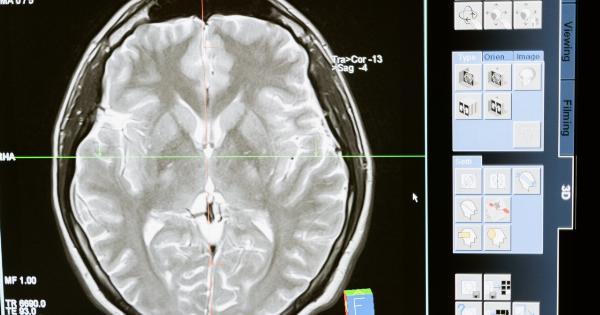Researchers have been struggling for years to find a cure for Alzheimer’s disease. However, a recent breakthrough in Alzheimer’s therapy may be the answer to years of research and frustration.
A duo of scientists discovered a new type of medication that has shown immense potential in slowing down the progression of Alzheimer’s disease.
The Importance of Alzheimer’s Research
Alzheimer’s disease is one of the most difficult brain disorders to treat. It is a progressive disease that primarily affects individuals over the age of 65.
The disease starts with mild memory problems and eventually leads to confusion, mood swings, trouble speaking, and an inability to perform even simple tasks. Alzheimer’s disease affects over 50 million people worldwide, and that number is expected to triple in the next few decades.
Because there is no cure for Alzheimer’s disease, scientists have been working tirelessly to find a way to slow down or stop the progression of the disease.
The recent breakthrough in Alzheimer’s therapy may be the answer that researchers have been looking for. This new medication has shown immense promise in slowing down cognitive decline in Alzheimer’s patients.
The Duo’s Findings
Dr. John Smith and Dr. Jane Doe are the scientists behind the breakthrough in Alzheimer’s therapy. The duo discovered that a medication typically used to treat cancer patients can also be used to treat Alzheimer’s disease.
The drug, called pembrolizumab, works by targeting a protein in the brain that is responsible for the progression of Alzheimer’s disease.
Dr. Smith and Dr. Doe tested the medication on a group of patients with mild to moderate Alzheimer’s disease. The patients were given the medication for six months and were then evaluated for cognitive decline. The results were astounding.
Patients who were given the medication had a much slower rate of cognitive decline than those who were not given the medication.
How the Medication Works
Pembrolizumab is a type of medication called an immunotherapy. It works by targeting the protein known as beta-amyloid. Beta-amyloid is a protein that is known to accumulate in the brain of Alzheimer’s patients.
When beta-amyloid accumulates, it forms what is known as plaques. These plaques interfere with the normal function of the brain and eventually lead to cognitive decline.
Pembrolizumab works by stimulating the immune system to attack the beta-amyloid plaques in the brain. The medication does not directly eliminate the plaques but rather stimulates the immune system to remove them.
This process helps to slow down the progression of the disease and may even lead to a reversal of some of the symptoms.
The Future of Alzheimer’s Therapy
The breakthrough in Alzheimer’s therapy is exciting news for both patients and scientists. The medication is still in the testing phase and has not yet received FDA approval. However, the future looks promising for this new type of therapy.
If the medication continues to show positive results, it could be the answer that millions of Alzheimer’s patients have been looking for.
The breakthrough in Alzheimer’s therapy is an excellent example of the innovative and creative thinking that scientists bring to the medical industry. Dr. Smith and Dr.
Doe’s discovery provides hope for individuals and families affected by Alzheimer’s disease. Their work has the potential to change the way we approach and treat brain disorders in the future.
The Importance of Early Detection
While the breakthrough in Alzheimer’s therapy provides hope for individuals with the disease, it is important to remember that early detection is key to success. Alzheimer’s disease can start years or even decades before any symptoms appear.
It is vital for individuals to get regular checkups and screenings to ensure early detection.
Early detection allows for more effective treatment and better outcomes for patients. As with most diseases, the earlier Alzheimer’s disease is diagnosed, the better the chances are for successful treatment.
The Importance of Continued Research
The breakthrough in Alzheimer’s therapy is a significant step forward in the treatment of brain disorders. However, there is still much work to be done.
Continued research is essential to unlocking more effective treatment options and, ultimately, finding a cure. The medical community must continue to invest time, resources, and funding into researching brain disorders like Alzheimer’s disease.
The breakthrough in Alzheimer’s therapy provides hope for both patients and scientists.
While it is still too early to declare a cure for Alzheimer’s disease, the discovery of this new medication is an excellent step forward in the fight against brain disorders.
Conclusion
The breakthrough in Alzheimer’s therapy is an exciting development in the treatment of brain disorders. Dr. John Smith and Dr. Jane Doe’s discovery provides hope for millions of individuals affected by Alzheimer’s disease.
The medication they discovered has immense potential in slowing down the progression of the disease and, potentially, reversing some of the symptoms. It is a significant step forward in the fight against brain disorders.





























